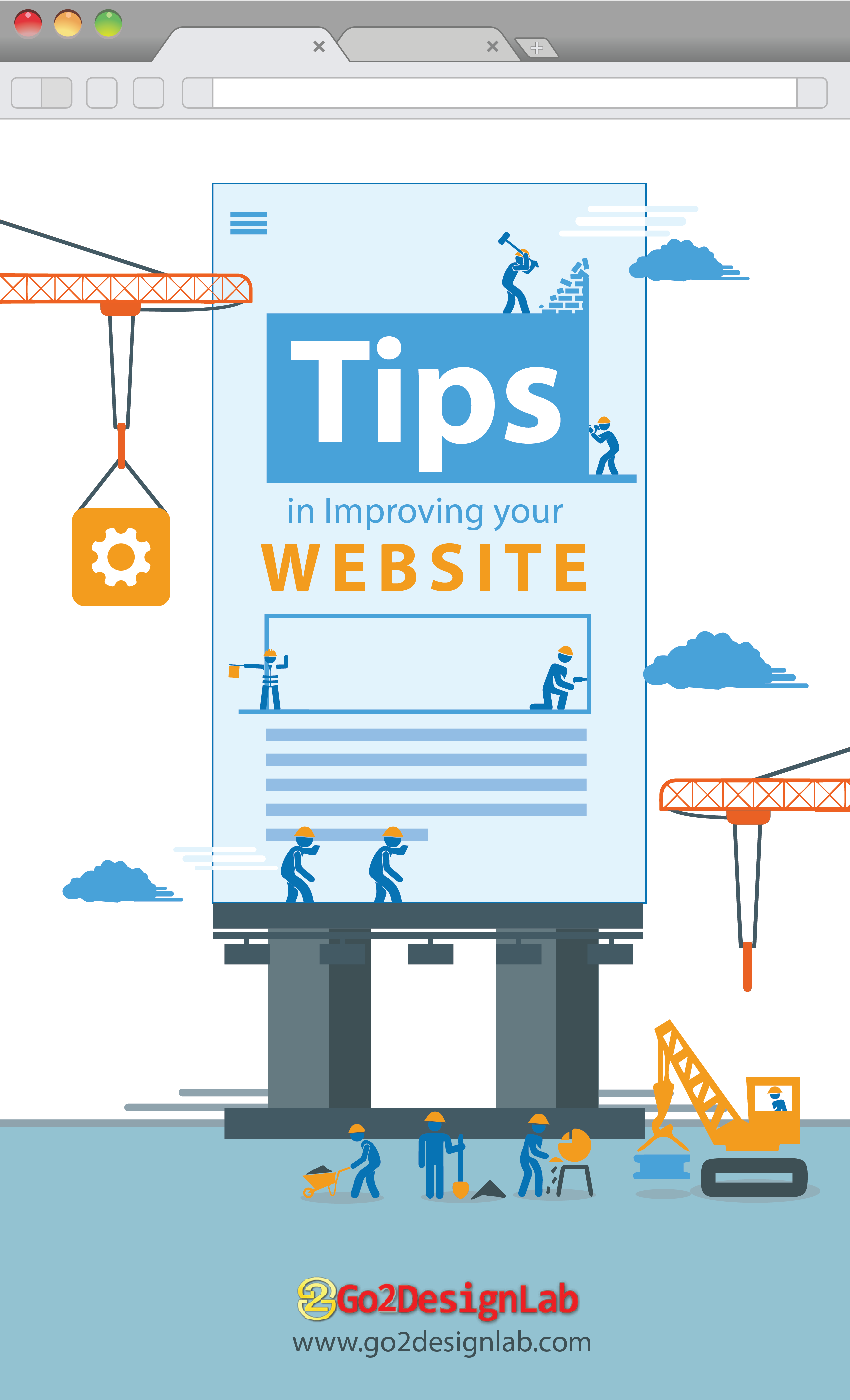
It’s 2019 already and new website trends are coming out but the foundation of building a high performance is still a must to follow. So in this article, I will be spilling out website tips to help you build a better website. And shout out to Good Web Design (on Twitter), I got this idea of giving website tips from them. Follow them on twitter @goodwebdesign, I learned a lot from them.
So much for that intro, let’s now start spilling website tips.
#websitetip No. 1 – Keep your domain name short
Long domain names are hard to remember, hard to spell over the phone, and tricky to fit onto business cards! Make your domain short but not too short, preferably with no greater than 18 characters.
And also, most importantly, include the main keyword on your domain name. If you’re running a construction company, you may include the keyword “construction” in your domain name, it helps a lot in Search Engine Optimization.
#websitetip No. 2 – You get what you pay for
Sure, you could get a free WordPress theme or use some cookie-cutter website-building service, but the trade-off is that you have to accept certain limitations that free website builders put in place. Website builders tended to be rather basic with enough functionality to just get the job done, it might work, but you wouldn’t get the efficiency and beauty that a professional would provide.
#websitetip No. 3 – Make it Responsive
More and more people tend to look through the internet with mobile devices and making your website “responsive” is a great marketing strategy you should start with. Make sure your website displays correctly on any screen, test it on a desktop, tablet and mobile to see differences and if necessary change it so that it works differently for different devices.
#websitetip No. 4 – Keep your website consistent
Consistency is a golden-rule in design. It means making everything matches from the Heading sizes, font choices, coloring, button styles, spacing, design elements, photo choices, etc. Everything should be themed to make your design consistent in all of the pages of your site. Consistency is the key, it is the biggest factor that separates a negative experience from a positive one.
#websitetip No. 5 – Website logos should link to the homepage
This recommendation is a long-standing web convention. Over time through trial and error, many people have learned that clicking on a site’s logo leads them back to the homepage. Following this standard on your site reduces confusion.
#websitetip No. 6 – Reduce the number of form fields
The shorter the form is, the higher the conversion rate will be. You don’t have to ask everything during their registration ( ex. Gender, address, or birthday), ask only the important ones ( like email address, number, full name, etc. ), you can just remind them to complete their details later after the registration.
Remember to keep the form short by limiting the data you collect to ones that are absolutely essential.
#websitetip No. 7 – Generate plain English URLs
It should come as no surprise that the easier a URL is to read for humans, the better it is for search engines.
Make sure to make your URL readable like this:
yoursite.com/use-plain-english-URLs-in-WordPress
Not like this:
yoursite.com/wpsamp/?p=123
#websitetip No. 8 – Use white space
Designers adore it. White space is an important element of design, it makes your content more legible while also enabling your user to focus on the elements surrounding the text.
#websitetip No. 9 – Always add an alt text to your images
Google can’t see what your images look like, but they look at alt tags to see what the image is about, and so ALT TEXT is a must on every image used. Adding alt tags to your images can also positively impact your website’s search engine rankings. If you have an e-commerce website, make sure to add an alt tag to your product photos.
#websitetip No. 10 – Use proper grammar
Proper grammar and spelling are very crucial for online marketing. Though Google already said that spelling and grammar is not a search engine ranking factor, a handful of spelling and grammar mistakes can still somehow affect your website performance, they will kill your credibility. If necessary, get yourself a copywriter or ask someone else proofread your content before publishing.
#websitetip No. 11 – Make your footer a mini sitemap
If you have a large site, you should make your footer a mini sitemap of its own. Putting too many links in your header can make it look messy. Reserve the header only for the most important content links and some of the links in the footer section. When users can’t find what they’re looking for in the header, they’re going to look in the footer.
#websitetip No. 13 – Make sure your website loads as fast as possible
Page load time can greatly affect your user experience and your site’s ability to convert visitors into buyers or into leads.
A one-second delay in page load time yields:
11% fewer page views
16% decrease in customer satisfaction
7% loss in conversions
Read this article “ SEO: 9 EFFECTIVE WAYS TO IMPROVE YOUR WEBSITE’S PERFORMANCE ” to help you be guided on how to make your website loads as fast as possible.
Now that you’ve learned some of the fundamentals of building a high-performing website, it’s now time to apply it to your website. If you need professional help in building a high-performing website, you may contact us via phone call 0905-525-0851 | (032) 410-6528 or email us [email protected].
Stay tuned to for more essential website tips.
0